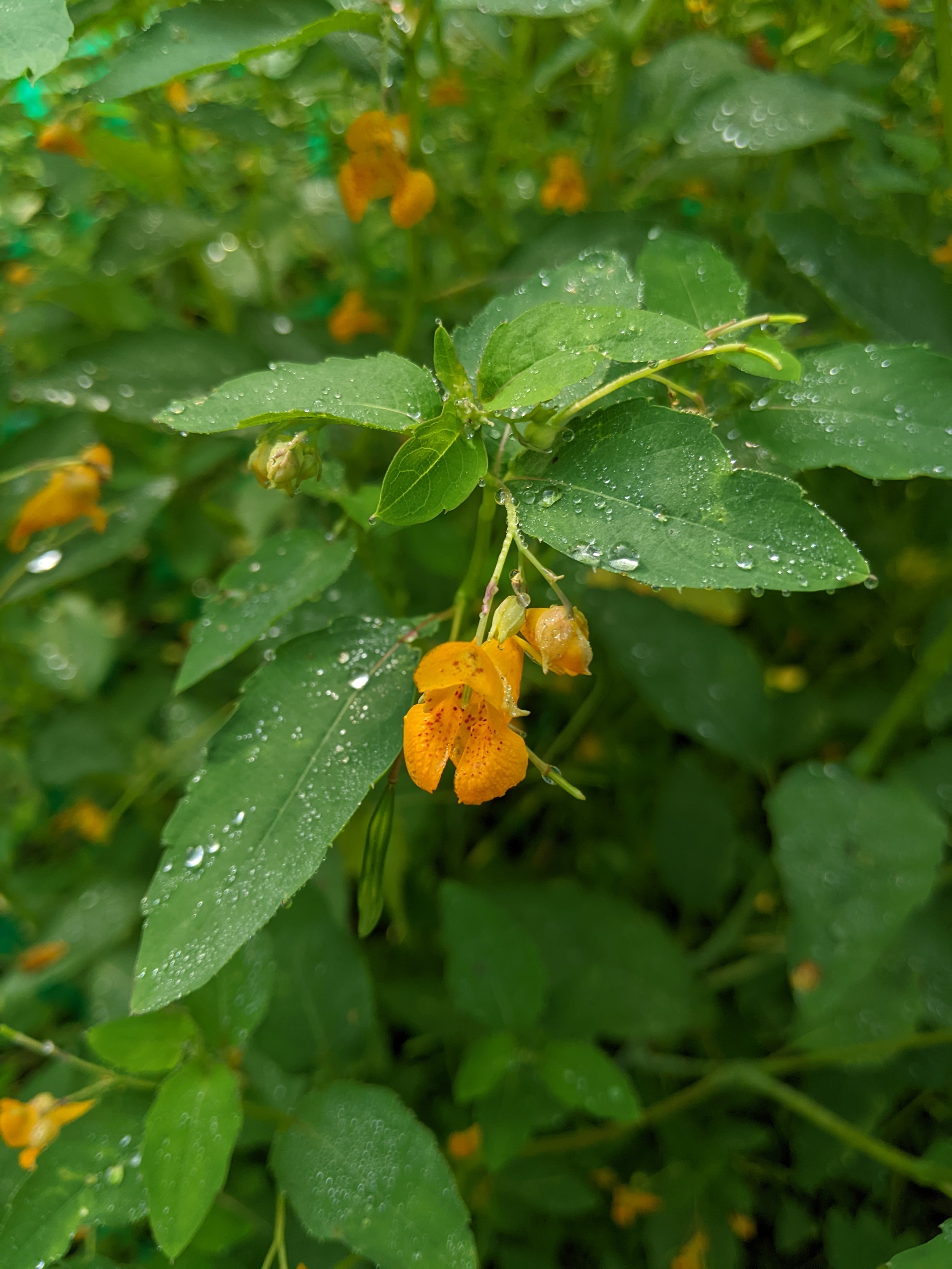Jewelweed
As seen in this early-morning picture from the garden, jewelweed is known to capture droplets of water on its leaves, which is one potential reason for the “jewel” in its name.
Also known as: orange balsam, orange jewelweed, spotted jewelweed, and spotted touch-me-not
Jewelweed, Impatiens capensis, is a self-seeding annual plant in the balsam family (Balsaminaceae) native to northern and eastern North America. The species name capensis, meaning “of the cape”, was applied because its origin was mistakenly thought to be from South Africa (Mahr, 2022). It is common and widespread in moist, shady areas such as low woodlands, margins of bogs and marshes, along streams and lakes, in ditches, and in disturbed areas such as road cuts. It can commonly grow from 2-5 ft tall.
Jewelweed has a long history of use in Native American medicine. When applied topically, sap from the stem and leaves is said to relieve itching and pain from a variety of ailments, including hives, poison ivy, stinging nettle, and other skin sores and irritations. The sap has also been shown to have anti-fungal properties and can be used to treat athlete’s foot (Kent, 2022).
The most traditional use for Jewelweed is to rub the stems to soothe areas affected by poison ivy. Conveniently, jewelweed tends to pop up in similar zones as posion ovy, along paths and near disturbed ground, and can often be found nearby when needed.
There’s not much need to worry about sustainable harvesting for jewelweed on our land! This large patch popped up in the orchard this year after we left a few plants to seed the area last summer.
Jewelweed Vinegar
As someone that is very allergic to poison ivy, I have found Jewelweed a very useful plant to have around. Although you can rub the plant on the affected areas after poison ivy exposure, we’ve had luck with making a vinegar solution that we keep in the house and use regularly when we’ve gotten rashes from poison ivy. The vinegar stings a little bit when it first goes on, but the drying effect of the vinegar combines well with the soothing effect of the jewelweed to keep the very irritating poison ivy rash from ruining my day.
To make the vinegar, we harvested the whole plant and roughly chopped it up and put it in a large mason jar. We added apple cider vinegar to cover the plant material and let it sit for about a month. (Actually, it’s still sitting - update coming soon when we decant the current batch!)
To be continued!
References:
Mayer, Susan. Wisconsin Department of Horticulture Website. Accessed July 16th, 2-22. https://hort.extension.wisc.edu/articles/jewelweed-impatiens-capensis/
Kent Karriker. U.S. Forest Service “Plant of the Week. Accessed July 16th, 2022. ”https://www.fs.fed.us/wildflowers/plant-of-the-week/impatiens_capensis.shtml





